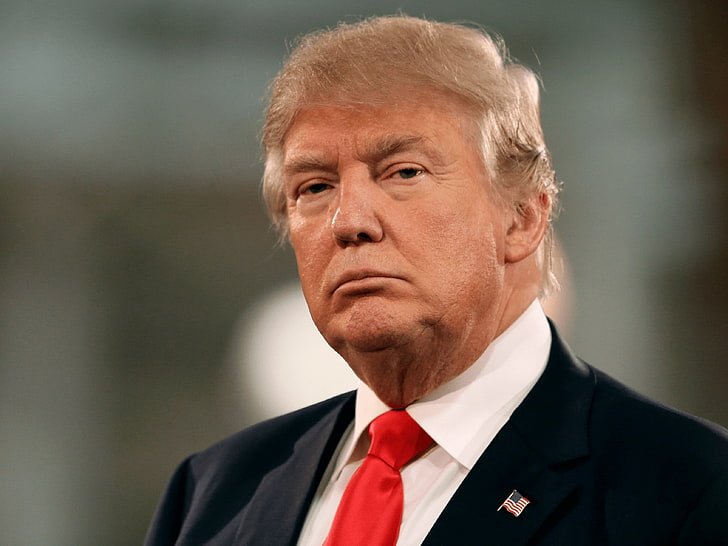Table of Contents
ToggleFederal Government Moves to Implement Nationwide Uniform Electricity Tariff from July 1, 2025
ISLAMABAD – In a significant step toward energy-sector reform, the federal government has directed the National Electric Power Regulatory Authority (NEPRA) to enforce a uniform electricity tariff across the entire country—including the service area of K‑Electric—starting July 1, 2025. This unified rate framework is to be implemented by integrating targeted subsidies, applicable surcharges, and adjustments arising from rationalization of inter-distribution company (inter-Disco) tariffs.
Key Directives & Background
In a motion issued by the Power Division, federal authorities reference NEPRA’s announced distribution company (Disco) tariffs dated June 23, 2025. NEPRA’s new schedule sees the national average electricity rate decrease to PKR 34 per unit for the fiscal year 2025–26, down from PKR 35.50 per unit in FY 2024–25. To finalize and formalize this rate structure, a public hearing has been scheduled for July 1, 2025, which NEPRA will conduct to review the federal government’s proposal for a standardized, nationwide tariff—including K‑Electric’s consumers.
The Power Division clarified in its motion that the inter-Disco tariff rationalization is not designed to generate additional revenue for the federal government. Rather, it aims to rebalance revenue requirements across distribution companies in compliance with Section 31(4) of the NEPRA Act, ensuring constitutional and policy-aligned implementation without increasing Discos’ gross revenue. Upon approval, the single-rate framework will become the “uniform final tariff” under Section 31(7) of the Act and will supersede the rates notified on July 14, 2024, with necessary amendments to prior SRO (Statutory Regulatory Order) notifications.
Rationale & Legal Basis
Constitutionally and under federal policy, the government is authorized to maintain a uniform consumer tariff—covering both K‑Electric and public (state-owned) Discos—even post privatization. The approach relies on combining direct and indirect subsidies to equalize costs for all consumers nationwide. Under this new scheme, K‑Electric’s variable charge will be adjusted so that its revenue requirement—pre-determined by NEPRA—can be satisfied while keeping its end tariff aligned with the uniform national rate. This adjustment accounts for targeted subsidies and inter-company cross‑subsidization, ensuring coherence with Disco-level tariff structures across Pakistan.
Legislative & Procedural Steps
The motion cites Section 7 and Section 31 (sub-sections 4 and 7) of the NEPRA Act, along with Rule 17 of the relevant regulations. Together, these provisions grant the federal government authority to ask NEPRA to reassess and issue a harmonized tariff schedule for Discos, including K‑Electric. The motion thus directs NEPRA to integrate applicable subsidies, rationalization surcharges, and cross-subsidy adjustments into the revised schedule. Following NEPRA’s formal consideration, the new uniform rate will be officially published by gazette notification via an updated SRO (No. 575(I)/2019), taking effect from July 1, 2025.
Subsidy Rationalization & Budgetary Impact
In tandem with the tariff restructuring, the federal government has undertaken a major review and realignment of the power‑sector subsidy budget for FY 2025–26. The allocations reflect a reduced subsidy commitment, which aligns with broader fiscal consolidation goals.
-
Total power‑sector subsidy fell by approximately 13%, from PKR 1.19 trillion in FY 2024–25 to PKR 1.036 trillion for FY 2025–26.
-
Inter-Disco tariff differential subsidy, essential for equalizing tariffs among distribution companies, was cut by 9.8%, from PKR 276 billion to PKR 249.136 billion.
-
Agricultural (tubewell) subsidy in Balochistan was halved, going from PKR 9.5 billion to PKR 4 billion.
-
Subsidies for merged districts of Khyber Pakhtunkhwa (formerly FATA) fell sharply—by over 38%, down from PKR 65 billion to PKR 40 billion.
-
Azad Jammu & Kashmir (AJK) subsidy saw a 31.5% reduction, decreasing from PKR 108 billion to PKR 74 billion.
-
The Pakistan Energy Regulatory Authority (PERA) Fund, tasked with disbursing roughly PKR 5 billion monthly to Chinese power producers under CPEC (China–Pakistan Economic Corridor), will maintain its FY 2024–25 level, totaling PKR 48 billion for FY 2025–26.
-
For K‑Electric, the subsidy has been notably trimmed by 28%, from PKR 174 billion in FY 2024–25 to PKR 125 billion for FY 2025–26.
-
An additional subsidy line item was new for Balochistan’s agricultural tubewells (KE), pegged at PKR 1 billion, up from PKR 0.5 billion previously.
These subsidy revisions reflect a government strategy seeking to manage fiscal burdens more stringently while still cushioning vulnerable consumer segments and ensuring equitable electricity pricing.
K‑Electric-Specific Adjustments
K‑Electric plays a unique role in the national tariff discussion due to its fully privatized status. Typically able to set rates independently, it has historically maintained better service quality—particularly in Karachi—at correspondingly higher costs. As part of the new policy decision, however, the government proposes to apply the national uniform tariff to K‑Electric’s consumers, supported by targeted subsidies designed to preserve its revenue integrity. These targeted mechanisms enable K‑Electric to recover its NEPRA-determined revenue targets while charging the same per-unit rate as other Discos nationally, ensuring neither preferential treatment nor deprivation.
Procedural Path Forward
-
Public Hearing (July 1, 2025)
NEPRA will conduct a full public hearing on the proposed uniform tariff motion, providing stakeholders—including Discos, consumer councils, civil society, and the public—an opportunity to engage and comment. -
NEPRA Consideration
Following closing submissions, NEPRA will review financial, legal, and policy implications, especially scrutinizing compliance with constitutional directives, subsidy allocations, tariff formulae, and Section 31 provisions concerning tariff rationalization. -
NEPRA Determination & Recommendations
NEPRA may approve the motion in full, approve it with amendments, or partially modify redistributive mechanisms. The modified “uniform final tariff,” as derived under Section 31(7), will then be recommended to the federal government. -
Federal Gazette Notification
Upon government approval, the new tariff schedule will be published via amendment to SRO No. 575(1)/2019 and associated notifications. This act effectively formalizes the unified tariff regime from July 1, 2025. -
Cabinet Endorsement
While the motion has already been forwarded to the Cabinet (June 28, 2025), the process is anticipatory—subject to final Cabinet sanction and subsequent public promulgation through the Official Gazette.
Policy Implications & Public Interest
The move achieves key policy outcomes:
-
Ensures tariff equity by harmonizing electricity rates nationwide.
-
Supports fiscal sustainability, evidenced by significant subsidy cuts while protecting needy segments.
-
Allows cross‑subsidization management between surplus and deficit-performing Discos.
-
Retains commercial viability of K‑Electric via revenue-targeted subsidy arrangements.
-
Advances consumer transparency, replacing regional pricing disparities with a clear, uniform system.
Challenges and Considerations
-
Compensation Design: Effectiveness depends on proper calibration of targeted subsidies—misalignment could harm service quality or financial viability of K‑Electric or other Discos.
-
Cross‑Disco Redistribution: Financial flows between Discos may get complex; a reliable clearing mechanism will be essential to prevent delays or shortfalls.
-
Regulatory Capacity: NEPRA must manage tariff rationalization alongside ongoing grid enhancements, loss reduction, and governance reforms.
-
Public Messaging: Crafting effective communication will be crucial to convey that subsidy reductions are policy-driven, not penalizing consumers, but aimed at long-term economic and social outcomes.
Fiscal Reality Check
The plan reflects broader fiscal reform trends. The reduced subsidy envelope—though still exceeding PKR 1 trillion—signals a balancing act between financial prudence and public welfare. For K‑Electric consumers, the shift to a unified tariff is offset by subsidies, ensuring service continuity amidst current tariff parity. However, sustained service quality and grid investment depend on how subsidy pass-through and revenue targets are managed going forward.
Next Steps for Stakeholders
-
Consumers: Watch for NEPRA communications concerning public hearing logistics, regulatory impacts, and expected billing adjustments.
-
K‑Electric & Discos: Prepare to participate in the July 1 public hearing with technical inputs regarding revenue requirements and subsidy distribution.
-
NEPRA: Expected to analyze submissions, audit inter-Disco reporting, and finalize tariff rationalization parameters for Cabinet endorsement and formal gazette publication.
-
Cabinet & Finance Ministry: Post-public hearing, anticipate final approval, budgetary allocation, and official notification process.
Timeline Summary
| Date | Event |
|---|---|
| June 23, 2025 | NEPRA issues Disco tariff schedule; national average set at PKR 34/unit. |
| June 28, 2025 | Federal government submits uniform tariff motion to Cabinet. |
| July 1, 2025 | Public hearing by NEPRA on tariff unification proposal. |
| Post-July 1, 2025 | NEPRA finalizes its determination and forwards it for government notification and Cabinet finalization. Tariff becomes effective, backed by formal gazette publication. |
Conclusion
Beginning July 1, 2025, Pakistan is set to transition to a national, uniform electricity tariff of PKR 34 per unit, replacing fragmented regional pricing—especially by including K‑Electric’s area under the same structure. The plan balances subsidy allocation, cross‑disco cost-sharing, and fiscal discipline, striving to align economic policy objectives with social equity. Successfully implemented, this unified tariff regime could deliver transparent, equitable pricing while preserving service viability across both public and privately operated Discos. However, its success will depend on careful rollout, subsidy design, and regulatory oversight.
If you’d like a breakdown of projected consumer impacts, subsidy distribution by province, or NEPRA’s technical methodology under Section 31, I’d be happy to provide more detail.
__________________________________________________________
‘Kya 5-Minute ki Break Le Lein? Meri Namaz Qaza Ho jayegi’, CM Maryam Nawaz
Rrad This Article
__________________________________________________________
Federal Government Moves to Implement Nationwide Uniform Electricity Tariff from July 1, 2025
ISLAMABAD – In a significant step toward energy-sector reform, the federal government has directed the National Electric Power Regulatory Authority (NEPRA) to enforce a uniform electricity tariff across the entire country—including the service area of K‑Electric—starting July 1, 2025. This unified rate framework is to be implemented by integrating targeted subsidies, applicable surcharges, and adjustments arising from rationalization of inter-distribution company (inter-Disco) tariffs.
Key Directives & Background
In a motion issued by the Power Division, federal authorities reference NEPRA’s announced distribution company (Disco) tariffs dated June 23, 2025. NEPRA’s new schedule sees the national average electricity rate decrease to PKR 34 per unit for the fiscal year 2025–26, down from PKR 35.50 per unit in FY 2024–25. To finalize and formalize this rate structure, a public hearing has been scheduled for July 1, 2025, which NEPRA will conduct to review the federal government’s proposal for a standardized, nationwide tariff—including K‑Electric’s consumers.
The Power Division clarified in its motion that the inter-Disco tariff rationalization is not designed to generate additional revenue for the federal government. Rather, it aims to rebalance revenue requirements across distribution companies in compliance with Section 31(4) of the NEPRA Act, ensuring constitutional and policy-aligned implementation without increasing Discos’ gross revenue. Upon approval, the single-rate framework will become the “uniform final tariff” under Section 31(7) of the Act and will supersede the rates notified on July 14, 2024, with necessary amendments to prior SRO (Statutory Regulatory Order) notifications.
Rationale & Legal Basis
Constitutionally and under federal policy, the government is authorized to maintain a uniform consumer tariff—covering both K‑Electric and public (state-owned) Discos—even post privatization. The approach relies on combining direct and indirect subsidies to equalize costs for all consumers nationwide. Under this new scheme, K‑Electric’s variable charge will be adjusted so that its revenue requirement—pre-determined by NEPRA—can be satisfied while keeping its end tariff aligned with the uniform national rate. This adjustment accounts for targeted subsidies and inter-company cross‑subsidization, ensuring coherence with Disco-level tariff structures across Pakistan.
Legislative & Procedural Steps
The motion cites Section 7 and Section 31 (sub-sections 4 and 7) of the NEPRA Act, along with Rule 17 of the relevant regulations. Together, these provisions grant the federal government authority to ask NEPRA to reassess and issue a harmonized tariff schedule for Discos, including K‑Electric. The motion thus directs NEPRA to integrate applicable subsidies, rationalization surcharges, and cross-subsidy adjustments into the revised schedule. Following NEPRA’s formal consideration, the new uniform rate will be officially published by gazette notification via an updated SRO (No. 575(I)/2019), taking effect from July 1, 2025.
Subsidy Rationalization & Budgetary Impact
In tandem with the tariff restructuring, the federal government has undertaken a major review and realignment of the power‑sector subsidy budget for FY 2025–26. The allocations reflect a reduced subsidy commitment, which aligns with broader fiscal consolidation goals.
-
Total power‑sector subsidy fell by approximately 13%, from PKR 1.19 trillion in FY 2024–25 to PKR 1.036 trillion for FY 2025–26.
-
Inter-Disco tariff differential subsidy, essential for equalizing tariffs among distribution companies, was cut by 9.8%, from PKR 276 billion to PKR 249.136 billion.
-
Agricultural (tubewell) subsidy in Balochistan was halved, going from PKR 9.5 billion to PKR 4 billion.
-
Subsidies for merged districts of Khyber Pakhtunkhwa (formerly FATA) fell sharply—by over 38%, down from PKR 65 billion to PKR 40 billion.
-
Azad Jammu & Kashmir (AJK) subsidy saw a 31.5% reduction, decreasing from PKR 108 billion to PKR 74 billion.
-
The Pakistan Energy Regulatory Authority (PERA) Fund, tasked with disbursing roughly PKR 5 billion monthly to Chinese power producers under CPEC (China–Pakistan Economic Corridor), will maintain its FY 2024–25 level, totaling PKR 48 billion for FY 2025–26.
-
For K‑Electric, the subsidy has been notably trimmed by 28%, from PKR 174 billion in FY 2024–25 to PKR 125 billion for FY 2025–26.
-
An additional subsidy line item was new for Balochistan’s agricultural tubewells (KE), pegged at PKR 1 billion, up from PKR 0.5 billion previously.
These subsidy revisions reflect a government strategy seeking to manage fiscal burdens more stringently while still cushioning vulnerable consumer segments and ensuring equitable electricity pricing.
K‑Electric-Specific Adjustments
K‑Electric plays a unique role in the national tariff discussion due to its fully privatized status. Typically able to set rates independently, it has historically maintained better service quality—particularly in Karachi—at correspondingly higher costs. As part of the new policy decision, however, the government proposes to apply the national uniform tariff to K‑Electric’s consumers, supported by targeted subsidies designed to preserve its revenue integrity. These targeted mechanisms enable K‑Electric to recover its NEPRA-determined revenue targets while charging the same per-unit rate as other Discos nationally, ensuring neither preferential treatment nor deprivation.
Procedural Path Forward
-
Public Hearing (July 1, 2025)
NEPRA will conduct a full public hearing on the proposed uniform tariff motion, providing stakeholders—including Discos, consumer councils, civil society, and the public—an opportunity to engage and comment. -
NEPRA Consideration
Following closing submissions, NEPRA will review financial, legal, and policy implications, especially scrutinizing compliance with constitutional directives, subsidy allocations, tariff formulae, and Section 31 provisions concerning tariff rationalization. -
NEPRA Determination & Recommendations
NEPRA may approve the motion in full, approve it with amendments, or partially modify redistributive mechanisms. The modified “uniform final tariff,” as derived under Section 31(7), will then be recommended to the federal government. -
Federal Gazette Notification
Upon government approval, the new tariff schedule will be published via amendment to SRO No. 575(1)/2019 and associated notifications. This act effectively formalizes the unified tariff regime from July 1, 2025. -
Cabinet Endorsement
While the motion has already been forwarded to the Cabinet (June 28, 2025), the process is anticipatory—subject to final Cabinet sanction and subsequent public promulgation through the Official Gazette.
Policy Implications & Public Interest
The move achieves key policy outcomes:
-
Ensures tariff equity by harmonizing electricity rates nationwide.
-
Supports fiscal sustainability, evidenced by significant subsidy cuts while protecting needy segments.
-
Allows cross‑subsidization management between surplus and deficit-performing Discos.
-
Retains commercial viability of K‑Electric via revenue-targeted subsidy arrangements.
-
Advances consumer transparency, replacing regional pricing disparities with a clear, uniform system.
Challenges and Considerations
-
Compensation Design: Effectiveness depends on proper calibration of targeted subsidies—misalignment could harm service quality or financial viability of K‑Electric or other Discos.
-
Cross‑Disco Redistribution: Financial flows between Discos may get complex; a reliable clearing mechanism will be essential to prevent delays or shortfalls.
-
Regulatory Capacity: NEPRA must manage tariff rationalization alongside ongoing grid enhancements, loss reduction, and governance reforms.
-
Public Messaging: Crafting effective communication will be crucial to convey that subsidy reductions are policy-driven, not penalizing consumers, but aimed at long-term economic and social outcomes.
Fiscal Reality Check
The plan reflects broader fiscal reform trends. The reduced subsidy envelope—though still exceeding PKR 1 trillion—signals a balancing act between financial prudence and public welfare. For K‑Electric consumers, the shift to a unified tariff is offset by subsidies, ensuring service continuity amidst current tariff parity. However, sustained service quality and grid investment depend on how subsidy pass-through and revenue targets are managed going forward.
Next Steps for Stakeholders
-
Consumers: Watch for NEPRA communications concerning public hearing logistics, regulatory impacts, and expected billing adjustments.
-
K‑Electric & Discos: Prepare to participate in the July 1 public hearing with technical inputs regarding revenue requirements and subsidy distribution.
-
NEPRA: Expected to analyze submissions, audit inter-Disco reporting, and finalize tariff rationalization parameters for Cabinet endorsement and formal gazette publication.
-
Cabinet & Finance Ministry: Post-public hearing, anticipate final approval, budgetary allocation, and official notification process.
Timeline Summary
| Date | Event |
|---|---|
| June 23, 2025 | NEPRA issues Disco tariff schedule; national average set at PKR 34/unit. |
| June 28, 2025 | Federal government submits uniform tariff motion to Cabinet. |
| July 1, 2025 | Public hearing by NEPRA on tariff unification proposal. |
| Post-July 1, 2025 | NEPRA finalizes its determination and forwards it for government notification and Cabinet finalization. Tariff becomes effective, backed by formal gazette publication. |
Conclusion
Beginning July 1, 2025, Pakistan is set to transition to a national, uniform electricity tariff of PKR 34 per unit, replacing fragmented regional pricing—especially by including K‑Electric’s area under the same structure. The plan balances subsidy allocation, cross‑disco cost-sharing, and fiscal discipline, striving to align economic policy objectives with social equity. Successfully implemented, this unified tariff regime could deliver transparent, equitable pricing while preserving service viability across both public and privately operated Discos. However, its success will depend on careful rollout, subsidy design, and regulatory oversight.




